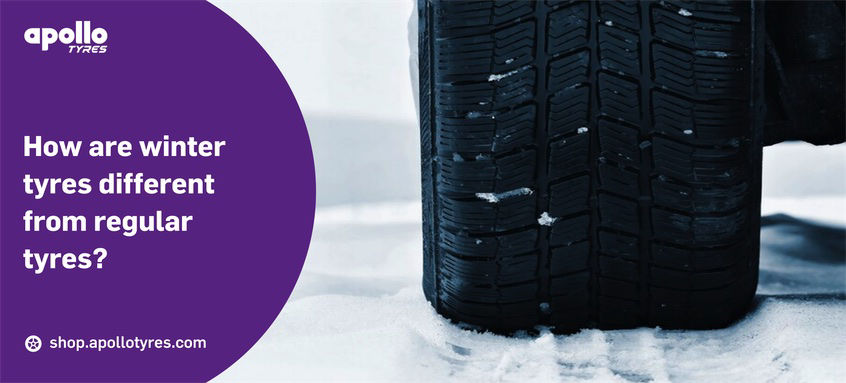
As winter approaches, drivers often find themselves facing challenging road conditions, including snow, ice, and slush. To tackle these hazardous elements effectively, having the right set of tires is crucial. In this blog post, we'll delve into the specifics of winter tires, explaining how they differ from regular tires, why they're important, and how to identify the best ones for your vehicle.
Understanding the Difference Between Regular Tyres and Winter Tyres
One of the primary differences between winter tires and regular tires lies in their tread patterns. Winter tires feature deeper and wider grooves, designed to provide better traction on snowy and icy roads. Additionally, winter tires are made from a different rubber compound that remains flexible even in cold temperatures. This flexibility allows them to grip the road better, ensuring your safety in winter driving conditions.
Low Profile Tires: Not Ideal for Winter
Planning to use low profile tyres during winters?
While low profile tires might offer a sleek appearance and enhanced handling in normal driving conditions, they are not the best choice for winter driving. Their reduced sidewall height makes them susceptible to damage from potholes and other road hazards, especially when driving over snow-covered roads. Winter tires, on the other hand, have taller sidewalls, providing an extra layer of protection for your wheels and ensuring a smoother ride even on uneven winter roads.
How to Identify Winter Tires?
Identifying winter tires is crucial for ensuring your safety on the road during the colder months. The easiest way to recognize winter tires is by looking for the mountain and snowflake symbol on the sidewall. This symbol indicates that the tire has met specific industry standards for snow traction. Additionally, you can find the "M+S" (mud and snow) marking on many winter tires, signifying their suitability for winter driving conditions.
The Best Winter Tires for Cars
Choosing the best winter tires for your car can be a daunting task with the multitude of options available in the market. When selecting winter tires, consider factors such as tread pattern, size, and your specific driving needs. Reading customer reviews and seeking advice from automotive experts can also help you make an informed decision.
Why Winter Tires Are Important?
Enhanced Traction: Winter tires provide superior traction on snow and ice-covered roads, significantly reducing the likelihood of skidding or losing control of your vehicle.
Shorter Stopping Distances: The advanced tread design of winter tires allows for shorter stopping distances, ensuring you can halt your vehicle promptly in emergency situations.
Improved Handling: Winter tires offer better handling in cold and slippery conditions, allowing you to navigate turns and curves more safely.
Enhanced Safety: Investing in winter tires enhances your overall safety on the road, reducing the risk of accidents and collisions during winter weather.
Peace of Mind: Knowing that your vehicle is equipped with the right tires for winter conditions gives you peace of mind, allowing you to drive confidently even when the weather is challenging.
Considering the Price
While the initial cost of winter tires might seem high, it's essential to view it as an investment in your safety. Winter tires can significantly reduce the risk of accidents, potentially saving you from costly repairs and insurance claims. Moreover, many tire retailers offer promotions and discounts, making it more affordable to equip your vehicle with reliable winter tires. When comparing prices, consider the overall value, including the tire's performance, durability, and the peace of mind it provides during winter driving.
Conclusion
Winter tires are essential for safe and secure driving during the colder months. Their unique design, featuring deeper treads and a specialized rubber compound, allows for better traction, handling, and braking on snow and ice-covered roads. Also, beware of using low profile tyres during winters. While low profile tires might be suitable for regular driving conditions, they lack the necessary grip and protection required for winter driving.

